France’s chaotic return to it’s Indochina colony after the end of WWII in 1945 saw the surprising use of some former Japanese warplanes, as the Indochina conflict against the communist Viet Minh began.
 (French air force Ki-43 “Oscar” fighter.)
(French air force Ki-43 “Oscar” fighter.)
(French navy E13A1 “Jake” seaplane.)
August 1945: French military aviation returns to Indochina
With the war in Europe just having ended just 3 ½ months prior, France was ill-prepared to restore a military aviation presence in it’s Asian colony when Japan surrendered in August 1945. In the interim, the Japanese forces in Indochina’s Tonkin province were instructed to surrender to Chinese troops, while those in Annam province north of the 17th Parallel (which later became the DMZ of the Vietnam War) were to surrender to a British task force which came ashore shortly thereafter. Everywhere else, the Japanese were supposed to wait for French forces to arrive.
A small team from the RAF’s 273rd Fighter Squadron out of British Burma landed along with the British force in mid-September and began to assess surrendered Japanese planes and the conditions of the airfields for the benefit of the French. Even though it was outside of their “zone”, the British established control of Tan Son Nhut airbase and began C-47 Dakota transport flights with aircraft of the RAF’s 62nd Transport Squadron.
 An equally important contribution was made by the RAF’s “Gremlin task forces”. These quickly-assembled small teams were sent all over what remained of the surrendered Japanese Empire, collecting Japanese planes, documents, spare parts, and in some cases, cooperative POWs to service the planes. In extreme examples, Japanese POWs were themselves allowed to fly transport planes to alleviate Britain’s airlift shortage.
An equally important contribution was made by the RAF’s “Gremlin task forces”. These quickly-assembled small teams were sent all over what remained of the surrendered Japanese Empire, collecting Japanese planes, documents, spare parts, and in some cases, cooperative POWs to service the planes. In extreme examples, Japanese POWs were themselves allowed to fly transport planes to alleviate Britain’s airlift shortage.
Small batches of French air force personnel began arriving in September 1945 but not all of the airbases in Indochina were fully up and running again until January 1946. Meanwhile, the first French naval aviation teams arrived in mid-October 1945, having flown in PBY Catalinas all the way from Europe via Morocco, Egypt, and British India.
FIGHTERS
The Nakajima Ki-43 “Oscar”
 (Ki-43 “Oscar” in postwar French service at Po Chen Tong, late 1945/early 1946.)
(Ki-43 “Oscar” in postwar French service at Po Chen Tong, late 1945/early 1946.)
The Nakajima Ki-43 “Oscar” was the main fighter type of the Imperial Japanese Army during WWII, and the contemporary of the Imperial Japanese Navy’s Mitsubishi A6M “Zero”. The “Oscar” served through WWII from beginning to end, and was in production for all but the last few months. It was the most successful Japanese Army land-based fighter and in fact, scored more victories than the Navy’s famous “Zero”.
The Ki-43 “Oscar” was 29’4″ long and had a wingspan of 35’6″. It was powered by a Nakajima Ha-115 air-cooled radial piston engine, and had a top speed of 286 kts with a ceiling of 36,750′, Depending on the version, it was armed with a pair of either 7.7mmm or .50cal machine guns.
France operated thirteen Ki-43s after WWII. Four were the ‘early’ version with the 7.7mm machine guns, and nine were the Ki-43-III version with .50cal machine guns, an upgraded engine, and pylons for two 45 gallon fuel tanks or small bombs.
One of the thirteen French “Oscar”s had been used by ATAIU (Allied Technical Air Intelligence Unit), a WWII joint Allied team which evaluated captured Japanese warplanes. This early-version “Oscar” had been captured by the Australian army at Buna (today in Papua New Guinea) in 1942 and then test-flown out of Brisbane, Australia during the war.
The sources of the other twelve delivered to France by the RAF were not well-documented. Not all of the Ki-43s had been in Indochina during the war, and it’s possible that none had. At least two were from the Imperial Japanese Army’s 64th Sentai which flew the “Oscar” out of occupied Burma during the war.
France stationed most of the “Oscar”s at Po Chen Tong airbase near Phnom Penh, the capital of what was then the Indochina province of Cambodia. They were assigned to the GC 1/7 and GC 2/7 fighter units of the French air force.
 (French air force Ki-43 “Oscar” at Bien Hoa in December 1945. This was one of the Ki-43s which had belonged to the 64th Sentai during WWII.)
(French air force Ki-43 “Oscar” at Bien Hoa in December 1945. This was one of the Ki-43s which had belonged to the 64th Sentai during WWII.)
The planes carried a mixture of markings. Some were still in WWII Japanese camouflage, others had been quickly repainted by the British. The French roundel was applied over the red hinomaru (rising sun) and in some cases, over the RAF roundel which itself had been painted over the hinomaru. The French tricolor was painted on the rudder. (The blue used on the Ki-43 pictured immediately above was an unsuitable aircraft paint and faded off, leaving just the red and white as seen.) The Ki-43s, at least those of GC 1/7, each carried a single huge letter of the alphabet on the fuselage behind the roundel. It’s not clear what the letters meant or how they were chosen. Curiously, one plane (letter “A”) retained it’s WWII Japanese squadron insignia for some time in French service.
France initially chose to station the fighters in Cambodia as a counter to the Thai air force, which survived WWII intact and was initially seen as a possible threat. Soon it became clear that Thailand had no hostile intentions so the “Oscar”s would not be needed in the air-to-air role. This was moot anyways, because maintaining the Japanese fighters was intensely difficult and French pilot proficiency on the Ki-43 was medium at best. Instead, the “Oscar”s were used as daylight visual reconnaissance planes over the jungle.
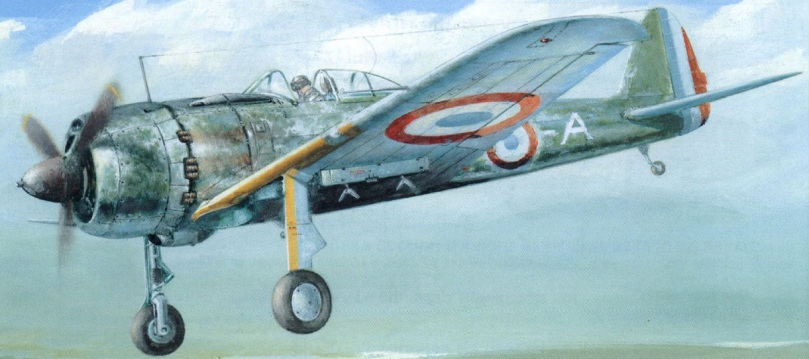 (Artwork from Avions magazine showing a WWII-veteran Ki-43 “Oscar” doing a daylight recon flight over French Indochina in November 1945. The French pilots often flew them with the landing gear lowered. For one, they were concerned that they might break down inflight and would not be able to lower them again. Also they acted as a crude airbrake during visual search flights, slowing the plane down a bit while allowing a decent engine RPM to be maintained. The drag and maneuverability penalty was irrelevant as the French had no intention of using the Ki-43s as actual fighters.)
(Artwork from Avions magazine showing a WWII-veteran Ki-43 “Oscar” doing a daylight recon flight over French Indochina in November 1945. The French pilots often flew them with the landing gear lowered. For one, they were concerned that they might break down inflight and would not be able to lower them again. Also they acted as a crude airbrake during visual search flights, slowing the plane down a bit while allowing a decent engine RPM to be maintained. The drag and maneuverability penalty was irrelevant as the French had no intention of using the Ki-43s as actual fighters.)
(This French “Oscar” of GC 2/7 had a landing gear failure and made a belly landing at Po Chen Tong on 12 December 1945. It was not repaired afterwards. Note that the blue has faded out of the inside of the roundel, as mentioned above.)
The Ki-43s of GC 1/7 were operational by early November 1945 and those of GC 2/7 shortly thereafter. Getting the planes worked up was challenging, as was keeping them airworthy. Some surrendered Japanese were recruited to help keep the planes flying.
 (A surrendered Japanese mechanic detailed to GC 1/7 watches as a French pilot prepares to fly an “Oscar” (the same one as the artwork above) in late 1945 / early 1946.)
(A surrendered Japanese mechanic detailed to GC 1/7 watches as a French pilot prepares to fly an “Oscar” (the same one as the artwork above) in late 1945 / early 1946.)
The French Ki-43s were replaced by Spitfires and all were then scrapped. The last French “Oscar” flight was on 7 February 1946. None ever saw combat in French use.
The Nakajima Ki-44 “Tojo”
(Restoration efforts on a Ki-44 “Tojo” in French Indochina after WWII. The man on the left appears to be a surrendered Japanese mechanic.)
A follow-on to the Ki-43, the Ki-44 “Tojo” was better on paper but never equaled the results of the “Oscar” in actual battle.
Post-WWII French use of this type is poorly documented. One example was repainted in French markings over the winter of 1945/1946, but there is no record of it’s use. It’s possible that it was never fully restored. The origin is a bit of a mystery as most Ki-44s were recalled to Japan itself in 1944/1945 to defend against bomber raids. One theory is that the plane had belonged to the 21st Dokuritsu Hikotai, which had operated “Tojo”s out of occupied Indochina earlier in WWII. Maybe this plane had broken down and was unable to make the return journey, and that was how the French found it after the war.
The Mitsubishi A6M “Zero”
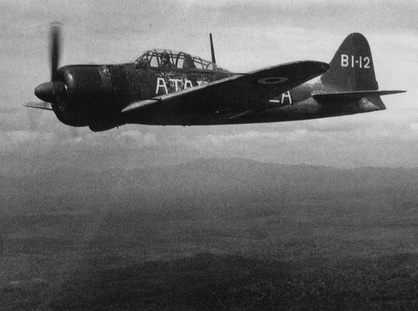 The most famous fighter of the Pacific theatre in WWII, the “Zero” had a very short career with France after the war. A single British-managed plane of ATAIU was loaned to France and briefly painted in French markings, operating out of Tan Son Nhut for a few weeks at the end of 1945. It was then given back to the RAF, who flew it to Tebrau, Malaya where it was briefly evaluated by British pilots before being scrapped in 1946.
The most famous fighter of the Pacific theatre in WWII, the “Zero” had a very short career with France after the war. A single British-managed plane of ATAIU was loaned to France and briefly painted in French markings, operating out of Tan Son Nhut for a few weeks at the end of 1945. It was then given back to the RAF, who flew it to Tebrau, Malaya where it was briefly evaluated by British pilots before being scrapped in 1946.
BOMBERS
The Mitsubishi Ki-30 “Ann”
 This light tactical bomber entered Imperial Japanese Army service in 1938. It measured 34′ long with a wingspan of 47’9″, and had a two-man crew. It was powered by a Nakajima Ha-5 radial piston engine and had a top speed of 239 kts.
This light tactical bomber entered Imperial Japanese Army service in 1938. It measured 34′ long with a wingspan of 47’9″, and had a two-man crew. It was powered by a Nakajima Ha-5 radial piston engine and had a top speed of 239 kts.
This slow, fixed-gear plane was already obsolete by the start of WWII. None the less, it served throughout the conflict, mainly in the Burmese and Chinese theatres. By 1945, many of the remaining “Ann”s were used as kamikazes.
France obtained one Ki-30 after the Japanese surrender. It was assigned to the French air force’s liaison squadron EL-99 and flew out of Tan Son Nhut. The French had no intentions of using it as a combat plane and instead it was used as a daylight visual patrol aircraft, and as a shuttle for pilots of other types to airbases around Indochina. Much like other ex-Japanese types, surrendered Japanese mechanics were employed to keep it flying. It was withdrawn and scrapped in 1946.
The Mitsubishi Ki-21 “Sally”
(Mitsubishi Ki-21 “Sally” of the French air force in Indochina during 1946. The Ki-30 “Ann” is on the right.)
Introduced with the “Ann” in 1938, the Imperial Japanese Army classified the Ki-21 “Sally” as a medium tactical bomber. The Ki-21 measured 52’6″ long with a wingspan of 73’10”, and originally had a crew of seven. It was powered by two Mitsubishi Ha-101 radial piston engines and had a top speed of 262 kts.
During the war, Japan had converted some to light transports by removing the bomb bay and adding a fuselage door and internal seating. This was the style of the one “Sally” obtained by France at the end of WWII.
 (French air force Ki-21 “Sally” in 1947.) (artwork by Olivier Beernaert)
(French air force Ki-21 “Sally” in 1947.) (artwork by Olivier Beernaert)
In French service, all defensive weapons were deleted and the lone “Sally” was used as a staff transport. It was originally assigned to the liaison squadron EL-99, then to the transport group GT 1/34, both out of Tan Son Nhut. It remained in service until 1948 when it was replaced by a Nord NC.701 Martinet – ironically, a French copy of the Luftwaffe’s Siebel Si-204.
The Mitsubishi Ki-51 “Sonia”
(French air force Ki-51 “Sonia” in early 1946.) (artwork by Olivier Beernaert)
The Ki-51 “Sonia” was an Imperial Japanese Army dive bomber which entered service in 1939. It measured 30’3″ in length and had a wingspan of 39’9″, with a two-man crew. It was powered by a Mitsubishi Ha-26 radial piston engine, and had a top speed of 229 kts. In many regards, it was a Japanese equivalent to Germany’s Ju-87 Stuka.
Somewhat useful in WWII’s early years, by 1943 the fixed-gear “Sonia” was extremely obsolete. Many were re-roled as trainers or artillery spotting planes. The only reasons it was kept in service were that it could operate off very rough grass airstrips, and it was easy to fly and maintain. Most of the examples in the Pacific theatre had been shot down or used as kamikazes, and the bulk of the survivors were in China, Korea, and Indochina.
France obtained two flyable examples at the end of WWII. The French removed the bomb racks and rearwards-facing machine gun. Assigned to the liaison squadron EL-99, the two planes were used for army coordination duties until 18 July 1946.
RECONNAISSANCE
The Mitsubishi Ki-46 “Dinah”
 During WWII, the Imperial Japanese Army classified the Ki-46 as a command reconnaissance aircraft. The “Dinah” measured 36’1″ long with a 48’3″ wingspan, and had a two-man crew. It was powered by a pair of Mitsubishi Ha-102 radial piston engines, and had a top speed of 326 kts with a range of 1,337 NM.
During WWII, the Imperial Japanese Army classified the Ki-46 as a command reconnaissance aircraft. The “Dinah” measured 36’1″ long with a 48’3″ wingspan, and had a two-man crew. It was powered by a pair of Mitsubishi Ha-102 radial piston engines, and had a top speed of 326 kts with a range of 1,337 NM.
France obtained two of these planes after Japan’s surrender, both of the Ki-46-IIK variant with an extra seat. The Japanese used this version as a conversion trainer during the war. They were assigned first to the liaison squadron EL-99, flying out of Tan Son Nhut. Both were again operational by late 1945.
France obtained two “other” Ki-46s. The first was a basic-version Ki-46 which was finally restored, after great effort, in February 1946. This extensive refurbishment was of little benefit as the plane was written off nine weeks later. There was also one Ki-46-III version, which was the ultimate variant with added fuel and supercharged engines. It crashed during takeoff on it’s first French flight attempt.
The two “Dinah”s were rarely used in their intended role by the French. More often, they were utilized as high-speed staff shuttles. They were retired at the end of April 1947.
The Tachikawa Ki-36 “Ida”
(French air force Ki-36 “Ida” in 1948.) (digital artwork by Michael Fader)
The Ki-36 scout plane was designated as a cooperation aircraft by the Imperial Japanese Army during WWII. This two-seat plane measured 25’3 in length with a 38’9″ wingspan, and was powered by a Hitachi Ha-13 engine (the same as the “Hickory” transports). It had a top speed of 188 kts.
France obtained six of these planes after the Japanese surrender. They were assigned to the liaison squadron EL-99 and flew out of Tan Son Nhut. By the end of WWII the Japanese had removed the rearwards-facing machine gun as these slow planes had no prayer in combat against enemy fighters anyways, and the French did not reinstall the guns. The bomb racks were also removed as those on the “Ida” were incompatible with American or French bomb types. During the Indochina war, they were used as scouts and artillery spotters, just as they had been during WWII. On occasion they were used as shuttles for pilots of other types moving between airbases. The engine commonality with the “Hickory” eased spare parts problems.
In 1947, EL-99 was redesignated ELA-51 and expended with the introduction of MS.500 Criquet light aircraft, which filled the same roles as the “Ida”. The six Ki-36s were retired in the summer of 1948. For a few months after their official retirement, they remained as ground property of BA-191 (the French air force base unit administering Tan Son Nhut) and may have made a few more “off the books” flights.
TRANSPORTS
The Tachikawa Ki-54 “Hickory”
 (French air force Ki-54 “Hickory” at Tan Son Nhut airbase in 1946.)
(French air force Ki-54 “Hickory” at Tan Son Nhut airbase in 1946.)
The Ki-54 entered Imperial Japanese Army service in 1941. It was originally designed as an advanced trainer for aircrews advancing to multi-engine types. The “Hickory” measured 39’2″ long with a 58’9″ wingspan. It was powered by a pair of Hitachi Ha-13 radial piston engines, and had a top speed of 202 kts. It was not intended for combat. The crew was a pilot and co-pilot, plus seating for eight trainees.
France obtained six of these planes when Japan surrendered. They were assigned to the liaison squadron EL-99 at Tan Son Nhut, but ventured all over French Indochina regularly.
In terms of usefulness, the Ki-54 was the best of the ex-Japanese planes used by the French after WWII. When the French found them, they were still in relatively good shape, at least compared to the fighters and seaplanes. The “Hickory” was very low-maintenance and, as it was originally intended as a trainer, it was easy for French pilots to master.
 (French air force Ki-54 of EL-99 in Cochinchina province, French Indochina, in 1947.)
(French air force Ki-54 of EL-99 in Cochinchina province, French Indochina, in 1947.)
The Ki-54 was used for every imaginable task including troop transport, resupply, medevac, aerial mapping, mail service, and visual reconnaissance. The “Hickory” was the only Japanese type which French pilots genuinely liked, and in 1946 a seventh example was restored to service, joining the original half-dozen.
 (A French air force Ki-54 “Hickory” medevacs wounded Foreign Legionnaires from Ban Me Thout in 1946. This particular plane still retained it’s WWII Japanese-standard camouflage at that time.)
(A French air force Ki-54 “Hickory” medevacs wounded Foreign Legionnaires from Ban Me Thout in 1946. This particular plane still retained it’s WWII Japanese-standard camouflage at that time.)
The first of the well-used French Ki-54s was retired in February 1947, and the last was officially off the books in July 1947, but at least one remained in sporadic use into early 1948.
The Nakajima Ki-34 “Thora”
(This 1947 photo of Saigon Airport shows three Ki-54 “Hickory” transports, but on the lefthand side, in front of the third Ki-54, the nose and cockpit of a Ki-34 “Thora” is visible. Also visible in front of the hangar is the rear part of a WWII-vintage Mosquito Mk.VI, which the Normandie-Niemen fighter squadron briefly used during the Indochina war before switching to P-63 Kingcobras.)
The Ki-34 “Thora” was a 1930s-vintage airliner adopted by the Imperial Japanese Army as a light transport during WWII. It had a maximum speed of 194 kts and could carry eight passengers plus a few hundred pounds of baggage.
France operated only one plane of this type, and it had a rather interesting history. Originally an Imperial Japanese Army plane, it was transferred to the Imperial Japanese Navy during WWII. In 1942, two or three of these naval “Thora”s were transferred to the puppet government of Cochinchina province in occupied Indochina as VIP transports. This one survived WWII and was commandeered by the French air force when France re-established control over Indochina in 1945.
Perhaps due to it’s murky legal situation (the Cochinchina local government continued to function, now as a French puppet instead of Japanese), no French squadron listed the “Thora” on it’s roll call. None the less, it remained in use until early 1947.
The Showa L2D2 “Tabby”
(The lone French “Tabby” as it appeared in March 1946.) (artwork by Olivier Beernaert)
The “Tabby” was an Imperial Japanese Navy adaptation of a 1930s-vintage Douglas airliner design used as a transport. The French transport unit GT 1/34 flew one plane, re-serialled 4265 in the post-WWII French series.
The sole French L2D2 had belonged to the Imperial Japanese Navy’s 13th Air Fleet during WWII. During the Japanese surrender, it was seized by the RAF and assigned to one of the Gremlin task forces. One of it’s duties was shuttling captured Japanese spare parts and technical documents to the French aviation forces in Indochina. After it’s final such mission, it was simply left there as unwanted by the British, and absorbed into the French transport unit GT 1/34 at Tan Son Nhut.
The most interesting part of the French “Tabby” was it’s markings. In August 1945, the Japanese painted a green surrender cross over the hinomaru, as instructed by General MacArthur. The British in turn applied the low-visibility (no red) RAF roundel over the hinomaru, but failed to fully remove the surrender cross. The French, for whatever reason, left the RAF roundel on and painted a French roundel further back on the fuselage. This specific “Tabby” had been named “Fany’s Frolic” by it’s British crew and that was left on as well.
The L2D2 crashed while landing at Bien Hoa on 30 July 1946.
SEAPLANES
In the times before WWII French Indochina was very suited to operating seaplanes, with it’s rivers, long coast, and many sheltered estuaries and ports. Before the Japanese occupation, France had built numerous dedicated seaplane bases in the colony: Ha Tien and Ben Tre in the southern part of Cochinchina province; Cap Ste. Jacques near Vung Tau in northern Cochinchina province; Cat Lai inside Saigon and Can Tho further inland; Cam Ranh Bay, Vinh, Nha Trang, Qui Nhon, and Hue in Annam province; Ha Long Bay in Tonkin province; Grand Lac inside Hanoi; Lang Song inland near the Chinese border; Kampot on the Cambodian coast; Khong and Kampong Cham deep inland in the Cambodian jungle; Pak Lai and Luang Prabang far inside Laos province.
During WWII, the Japanese used and expanded these bases. When the French returned after the war, they duly took use of them once again.
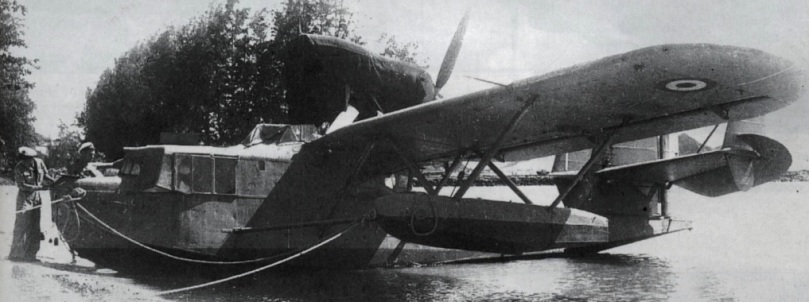 (This Loire 130 seaplane belonged to the French navy’s 5th Squadron, based at Cat Lai, prior to WWII and was then used by the Vichy forces until Japan revoked the puppet Vichy authority in June 1944. When the French returned to Indochina in 1945, this plane was found abandoned along a river in Bien Hoa, 20 miles from Saigon, still in Vichy markings. How it got there is anybody’s guess and it’s amazing that the Japanese didn’t find or destroy it. French mechanics repaired this obsolete seaplane and it served alongside the ex-Japanese types below in the 8th Squadron until 1950.)
(This Loire 130 seaplane belonged to the French navy’s 5th Squadron, based at Cat Lai, prior to WWII and was then used by the Vichy forces until Japan revoked the puppet Vichy authority in June 1944. When the French returned to Indochina in 1945, this plane was found abandoned along a river in Bien Hoa, 20 miles from Saigon, still in Vichy markings. How it got there is anybody’s guess and it’s amazing that the Japanese didn’t find or destroy it. French mechanics repaired this obsolete seaplane and it served alongside the ex-Japanese types below in the 8th Squadron until 1950.)
The Nakajima A6M2-N “Rufe”
(French navy A6M2-N “Rufe” at Cat Lai seaplane base in early 1946.)
The “Rufe” was one of the more curious planes of the Pacific theatre during WWII. It was essentially a “Zero” modified with floats. The Imperial Japanese Navy designated it an ‘aquatic fighter’, and as envisioned, it would allow defensive air units to protect small islands in the Pacific without the need to build airstrips. The designers felt it would be at least on par with lower-tier Allied fighters like the Brewster Buffalo and F4F Wildcat, and would be superior to all dive bombers, patrol planes, etc. Using small detachments on remote islands would allow the rest of the IJN’s fighters to be used in the ‘grand battle’ which they thought would decide the war.
As it turned out, the concept was terribly flawed. The USA’s island-hopping campaign made defense of remote garrisons critical. The drag from the floats made the “Rufe” about 20% slower than a F6F Hellcat, and these planes were torn apart in combat. Only 327 were built. The float-fighter concept was abandoned and the “Rufe”s were used as rear-area patrol planes for the most part.
 (The lone French “Rufe” at Cat Lai in 1946.) (official French navy photo)
(The lone French “Rufe” at Cat Lai in 1946.) (official French navy photo)
Structurally identical to the A6M “Zero”, the single-seat “Rufe” had two 20mm guns and two machine guns, and could carry two small bombs. It measured 33’1″ long with a wingspan of 39’4″, and was powered by a Nakajima NK1C radial piston engine. It had a maximum speed of 236 kts and a ceiling of 32,809′.
France operated only a single “Rufe”, and only for the shortest of time. This particular plane had belonged to the IJN’s 934th Naval Air Group during WWII and ended the war at Surabaya (today in Indonesia). From there it was flown by the British to Singapore, and then to an RAF base in Malaya where it was evaluated by ATAIU. At the end of 1945 it was donated to France and flown to Cat Lai.
 (The future French “Rufe” being wheeled out. The wing markings are not medical, but rather green “surrender crosses” which General MacArthur instructed Japan to paint over the hinomarus inbwteen the Emperor’s announcement and the actual surrender, to avoid being attacked.)
(The future French “Rufe” being wheeled out. The wing markings are not medical, but rather green “surrender crosses” which General MacArthur instructed Japan to paint over the hinomarus inbwteen the Emperor’s announcement and the actual surrender, to avoid being attacked.)
This particular plane had not been well-maintained by the Japanese in the final months of the war, and had been run hard by ATAIU afterwards. It was badly in need of service, which was not easy as the A6M2-N combined the complexity of a fast fighter with the added challenges of a saltwater seaplane.
 (The French navy’s “Rufe” being overhauled at Cat Lai in January 1946.)
(The French navy’s “Rufe” being overhauled at Cat Lai in January 1946.)
The whole effort was for nothing anyways. During the “Rufe”s first operational mission on 19 February 1946, it crashed near Rach Ba Sang.
 (The French “Rufe” being rolled out at Cat Lai for it’s first and last mission.)
(The French “Rufe” being rolled out at Cat Lai for it’s first and last mission.)
The Aichi E13A1 “Jake”
(A “Jake” of the French navy’s 8th Squadron leaving Cat Lai’s seaplane ramp.)
Of all the ex-Japanese types used by France during the Indochina war, the Aichi E13A1 “Jake” is probably the most famous. It was the type that saw the most frequent use, and was used for all imaginable tasks. It was the first Japanese design the French successfully “resurrected” in 1945, and was the most-photographed in service.
The “Jake” was one of the most common (1,418 built) Axis seaplanes. It measured 37’1″ long with a 47’7″ wingspan. The three-seat plane was powered by a Mitsubishi Kinsei 43 radial piston engine, and had a top speed of 204 kts with a ceiling of 28,500′ and range of 1,300 NM. It was armed with a rearwards-facing Type 92 machine gun, and had a rack for a bomb or four small depth charges. The Imperial Japanese Navy used it both with catapults off cruisers and from ashore bases.
When French troops returned to Cat Lai in September 1945, they found about a half-dozen of these planes in various states of disrepair. During the first week of October 1945, a French navy team determined that four of them could be brought back to use. As there were no French naval aircraft in the whole colony at that time, this was viewed as an urgent priority.
 (The condition of a French “Jake” as it was found at Cat Lai after the end of WWII.)
(The condition of a French “Jake” as it was found at Cat Lai after the end of WWII.)
Many sources incorrectly state that there were eight French “Jake”s, in fact the same four were just later renumbered.
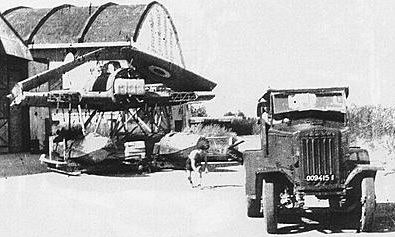 (A “Jake” at Cat Lai, now in French markings, undergoing repairs.)
(A “Jake” at Cat Lai, now in French markings, undergoing repairs.)
The first flight by a restored “Jake” was in early December 1945 and by mid-January 1946, all four were operational. The French removed all of the armament, with the former rear machine gunner’s position used as a passenger space or (with the seat removed) as a small cargo hold.
 (A French “Jake” on patrol during the Indochina war.)
(A French “Jake” on patrol during the Indochina war.)
 (A “Jake” is manhandled in the water at one of the many French seaplane bases in late 1940s Indochina.)
(A “Jake” is manhandled in the water at one of the many French seaplane bases in late 1940s Indochina.)
France used the “Jake” for anti-smuggling coastal patrols, visual reconnaissance over land, artillery spotting, mail runs, medevac, and as staff transports. While the 8th Squadron was based at Cat Lai in Cochinchina province (today, the southern part of Vietnam), it’s “Jake”s flew all over the colony (including to Cambodia province) with frequent visits to the Ha Long Bay seaplane base in Tonkin provice. The “circuit” between Cat Lai and Ha Long Bay was particularly useful, as the Viet Minh communists had no navy or air force, planes over the sea were immune to any type of threat.
 (A French navy “Jake” pulled aboard the former aircraft carrier – by then, downrated to plane transport – Bearn, which was anchored off Ha Long Bay seaplane base. Bearn had superior tools and mechanics compared to the base facilities. After the Indochina War, the Ha Long Bay facility was converted into a smuggling junk base for the Viet Cong. The base was bombed into oblivion during the Vietnam War. Today the area is a nature reserve, and Vietnamese people consider the attractive scenery a national emblem, like the Grand Canyon is to Americans.)
(A French navy “Jake” pulled aboard the former aircraft carrier – by then, downrated to plane transport – Bearn, which was anchored off Ha Long Bay seaplane base. Bearn had superior tools and mechanics compared to the base facilities. After the Indochina War, the Ha Long Bay facility was converted into a smuggling junk base for the Viet Cong. The base was bombed into oblivion during the Vietnam War. Today the area is a nature reserve, and Vietnamese people consider the attractive scenery a national emblem, like the Grand Canyon is to Americans.)
While the cargo capacity was small, the “Jake”s were often used to ferry urgently needed medicines to the front lines. They had somewhat better flexibility than wheeled aircraft, as they could hop over communist-held areas and land on rivers. For example, as the northeast part of Tonkin province became heavily communist, they would fly from Cat Lai to Ha Long Bay, and then to the Grand Lac seaplane base in downtown Hanoi.
 (All four French “Jake”s were used for medical purposes at one point or another, but one was specifically roled as a “flying doctor” and marked with Geneva Convention red crosses.)
(All four French “Jake”s were used for medical purposes at one point or another, but one was specifically roled as a “flying doctor” and marked with Geneva Convention red crosses.)
 (A French “Jake” at Cat Lai in 1947.)
(A French “Jake” at Cat Lai in 1947.)
As the years wore on, maintenance on the E13A1s became harder, both due to wear and tear, and a lack of spare parts. None the less, the French were determined to keep the four planes going. In 1947, one had a catastrophic engine failure. The original Kinsei 43 engine was removed, and in it’s place a Kasei 22 salvaged from a Kawanishi H8K2 “Emily” destroyed during WWII was installed. This would be an extreme ‘surgery’ under any circumstances, let alone on an aging foreign-built plane, but the job was successful.
 (The engine of the “Emily” grafted onto the “Jake”. One can only imagine what the French pilot was thinking if this was the first flight after the installation.)
(The engine of the “Emily” grafted onto the “Jake”. One can only imagine what the French pilot was thinking if this was the first flight after the installation.)
In August 1947, the French negotiated the purchase of some Supermarine Sea Otter seaplanes from the Royal Navy’s detachment in soon-to-be-independent India. These began to arrive the autumn of 1947, initially serving alongside the 8th Squadron’s “Jake”s at Cat Lai. From a strictly textbook perspective, the 1930s-vintage Sea Otter was a backwards step from the “Jake”, however the French were less interested in performance and more interested in future availability of spare parts.
 (Sea Otters and “Jake”s together at Cat Lai in late 1947.)
(Sea Otters and “Jake”s together at Cat Lai in late 1947.)
The French navy officially retired the E13A1 in August 1948. As there was no rush to scrap them, one was used for some “off the books” local flights into early 1949. With that, the French navy’s experiment with using ex-Japanese seaplanes ended.
 (End of the road for the “Jake” in 1948.)
(End of the road for the “Jake” in 1948.)
Cat Lai seaplane base: a brief history through the years
The French colonial government established a small “base d’hydro-avions” along a gently-sloping bank of the Dong Nai river, a tributary of the Mekong, in the early 1930s.
 (A pre-WWII French chart showing the Cat Lai facility. At the time, Cat Lai was 7 miles outside of Saigon. Today it is just a neighborhood inside sprawling Ho Chi Minh City.)
(A pre-WWII French chart showing the Cat Lai facility. At the time, Cat Lai was 7 miles outside of Saigon. Today it is just a neighborhood inside sprawling Ho Chi Minh City.)
When WWII started, the French navy’s 5th Squadron had a small number of seaplanes stationed at Cat Lai. The Japanese allowed the pro-Vichy government to keep them there. Meanwhile the Imperial Japanese Navy gradually took over the base, adding a third hangar and expanding the seaplane ramp. A unit of Aichi E13A1 “Jake” planes was based at Cat Lai. The facility escaped damage during WWII.
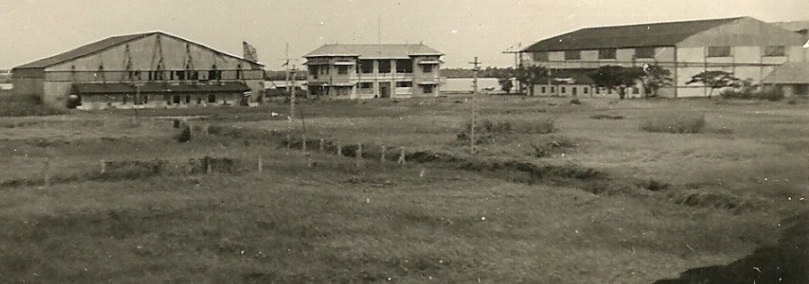 (The mansion which served as Cat Lai’s commandant’s quarters, in September 1945 shortly after the Japanese commander had been evicted.)
(The mansion which served as Cat Lai’s commandant’s quarters, in September 1945 shortly after the Japanese commander had been evicted.)
During the Indochina War, Cat Lai seaplane base was again slightly improved by the French. A small wooden pier was added allowing LCMs and other river warfare boats to tie up, which, as time passed, gradually equaled the seaplane activity at Cat Lai.
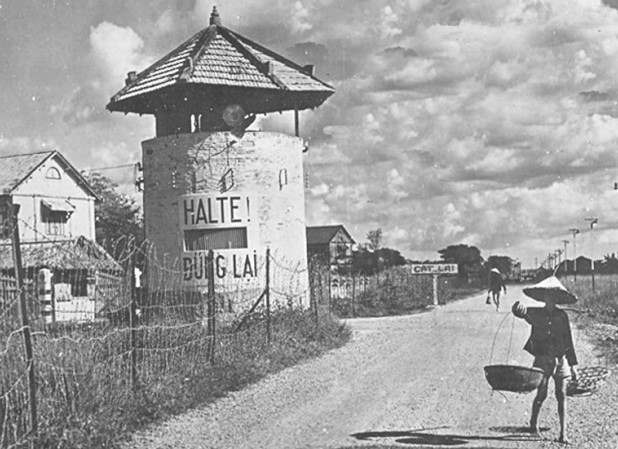 (The original Cat Lai guardhouse, which survived WWII, once again in French hands in 1946.)
(The original Cat Lai guardhouse, which survived WWII, once again in French hands in 1946.)
(Cat Lai seaplane base as it appeared during the first part of the 1946-1954 Indochina War, essentially unchanged from WWII. The commandant’s mansion is the white building right of the twin pre-WWII hangars adjacent to the seaplane apron and ramp. The WWII Japanese-built hangar is the second from the right, with the largest hangar having been built during the Indochina War. The little white squares are soldier’s quarters.)
After the Indochina War, the Cat Lai seaplane base was one of the final facilities the French turned over to South Vietnam as they evacuated the former colony. The last French forces left in June 1956. The new tenants were the ARVN (South Vietnamese army) 100th Ordnance Arsenal unit. The South Vietnamese did not have any seaplanes and used Cat Lai exclusively for riverine warfare boats. Otherwise the facility remained generally unchanged.
As the Vietnam War picked up in the 1960s, American forces took over the former French seaplane base. The primary tenants were the US Army’s 11th Transportation Battalion and 188th Military Police Company. Cat Lai’s seaplane days were now long over and the facility was used exclusively for boats.
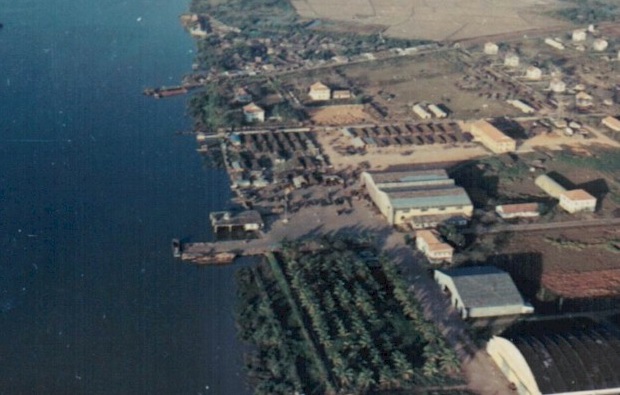 (Cat Lai in 1967 during the Vietnam War. US Army quonset huts now fill up the former parade lawn. The commandant’s mansion remains between the hangars (it was later hit by a Viet Cong mortar round). Two wooden piers are now present and the WWII Japanese seaplane ramp has been converted into a boat mooring. The former seaplane apron is now a parking lot. The old seaplane hangars were used for storage.)
(Cat Lai in 1967 during the Vietnam War. US Army quonset huts now fill up the former parade lawn. The commandant’s mansion remains between the hangars (it was later hit by a Viet Cong mortar round). Two wooden piers are now present and the WWII Japanese seaplane ramp has been converted into a boat mooring. The former seaplane apron is now a parking lot. The old seaplane hangars were used for storage.)
The American military departed Cat Lai in 1971, fully turning it over to the South Vietnamese.
 (A seaplane hangar in 1971, by that time a large workshop. The roof of the old commandant’s mansion is to the left.)
(A seaplane hangar in 1971, by that time a large workshop. The roof of the old commandant’s mansion is to the left.)
After 1972, when American financial aid to South Vietnam began to dry up, Cat Lai slowly fell into disrepair and disuse. One of the tenant commands was the South Vietnamese navy ship HQ-9602 which had formerly been the Astoria, OR river ferry M/V Chessman before being bought by South Vietnam for conversion into a floating repair barge. Generally, between 1971-1975 Cat Lai was only used as a mooring for surplus river warfare boats.
When North Vietnam overran Saigon in 1975 and reunified the country, the Cat Lai facility was captured undamaged. The Vietnamese navy had little use for it, and it basically served as a support and storage yard for a larger Vietnamese navy facility nearby (the former barracks of the US Army’s 199th Infantry Brigade).
The Cat Lai facility was wound down in the 1990s. In the early 2000s, the entire facility was bulldozed to make room for a shipping container yard. Nothing at all remains of the seaplane base and the site has no historical signs or markers of it.
 (The site of the former Cat Lai seaplane base in August 2015. Ho Chi Minh City’s modern Nyugen Thi Dinh Street roughly follows the old angled French colonial road on the base’s edge. The basic square footprint of the base can be seen by the truck access paths around the container area. The riverfront has been completely redeveloped with concrete quays for seagoing merchant ships. Looking at the shadows cast by the ship in the image, the WWII Japanese seaplane ramp would have been about where the right-most of the three shadows tops off.)
(The site of the former Cat Lai seaplane base in August 2015. Ho Chi Minh City’s modern Nyugen Thi Dinh Street roughly follows the old angled French colonial road on the base’s edge. The basic square footprint of the base can be seen by the truck access paths around the container area. The riverfront has been completely redeveloped with concrete quays for seagoing merchant ships. Looking at the shadows cast by the ship in the image, the WWII Japanese seaplane ramp would have been about where the right-most of the three shadows tops off.)


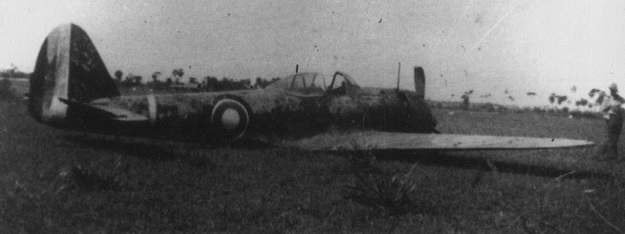




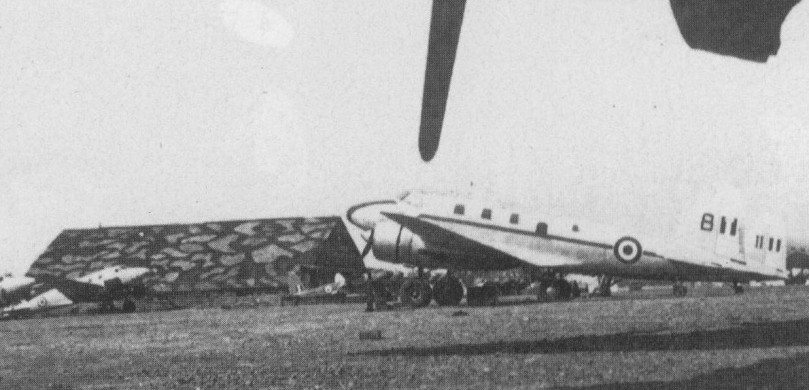



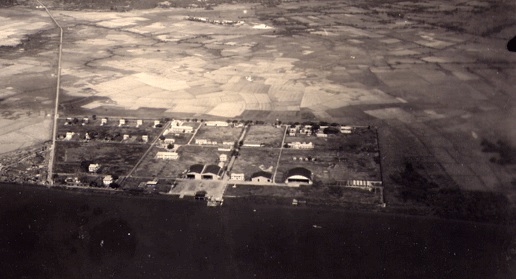
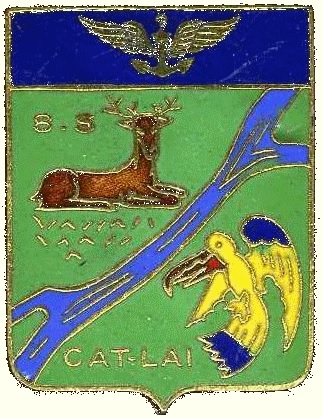
Reblogged this on Brittius.
LikeLike
Reblogged this on Meccanica Mekaniikka Mecanică.
LikeLike
Very Good !
LikeLike
Really enjoyed the photos and history. Thankyou.
LikeLiked by 1 person
Was based at Cat Lai (LCMs) in 1966 and remember my mates asking what ‘défense de fumer’ painted on inside wall of hangar meant. Told them it was a ‘no smoking’ relic from the French era. ‘What! You mean the French were here?’
LikeLiked by 1 person
Thats awesome that the sign was still there.
LikeLike
Excellent article. That is what makes this forum so useful. Many thanks.
Stephen
LikeLiked by 1 person
Where is located Rach Ba Sang, where the Rufe supposed crashed in 1946? I have looked into many maps and I can not find it anywhere?
LikeLike
It may be a French mis-transliteration?
LikeLike
Excellent collection of photos. The ‘Ki-44 Tojo’ is infact a Ki-43 Oscar. The shape of the oil cooler intake is very different on a Ki-44.
LikeLike